I have a lot of x-y data points with errors on y that I need to fit non-linear functions to. Those functions can be linear in some cases, but are more usually exponential decay, gauss curves and so on. SciPy supports this kind of fitting with scipy.optimize.curve_fit, and I can also specify the weight of each point. This gives me weighted non-linear fitting which is great. From the results, I can extract the parameters and their respective errors.
There is just one caveat: The errors are only used as weights, but not included in the error. If I double the errors on all of my data points, I would expect that the uncertainty of the result increases as well. So I built a test case (source code) to test this.
Fit with scipy.optimize.curve_fit gives me:
Parameters: [ 1.99900756 2.99695535]
Errors: [ 0.00424833 0.00943236]
Same but with 2 * y_err:
Parameters: [ 1.99900756 2.99695535]
Errors: [ 0.00424833 0.00943236]
Same but with 2 * y_err:
So you can see that the values are identical. This tells me that the algorithm does not take those into account, but I think the values should be different.
I read about another fit method here as well, so I tried to fit with scipy.odr as well:
Beta: [ 2.00538124 2.95000413]
Beta Std Error: [ 0.00652719 0.03870884]
Same but with 20 * y_err:
Beta: [ 2.00517894 2.9489472 ]
Beta Std Error: [ 0.00642428 0.03647149]
The values are slightly different, but I do think that this accounts for the increase in the error at all. I think that this is just rounding errors or a little different weighting.
Is there some package that allows me to fit the data and get the actual errors? I have the formulas here in a book, but I do not want to implement this myself if I do not have to.
I have now read about linfit.py in another question. This handles what I have in mind quite well. It supports both modes, and the first one is what I need.
Fit with linfit:
Parameters: [ 2.02600849 2.91759066]
Errors: [ 0.00772283 0.04449971]
Same but with 20 * y_err:
Parameters: [ 2.02600849 2.91759066]
Errors: [ 0.15445662 0.88999413]
Fit with linfit(relsigma=True):
Parameters: [ 2.02600849 2.91759066]
Errors: [ 0.00622595 0.03587451]
Same but with 20 * y_err:
Parameters: [ 2.02600849 2.91759066]
Errors: [ 0.00622595 0.03587451]
Should I answer my question or just close/delete it now?
